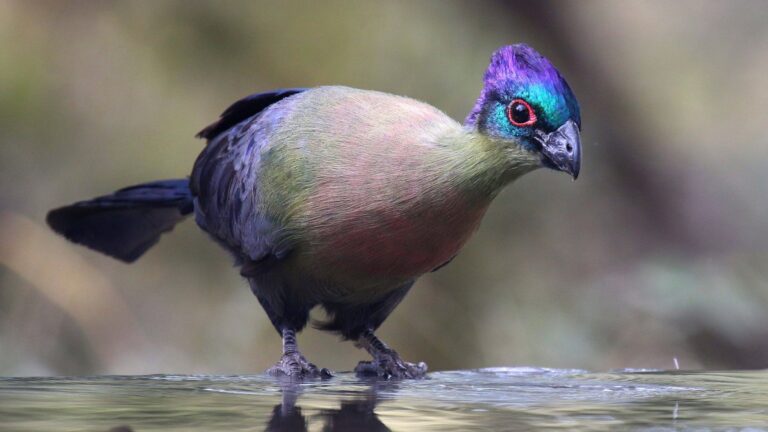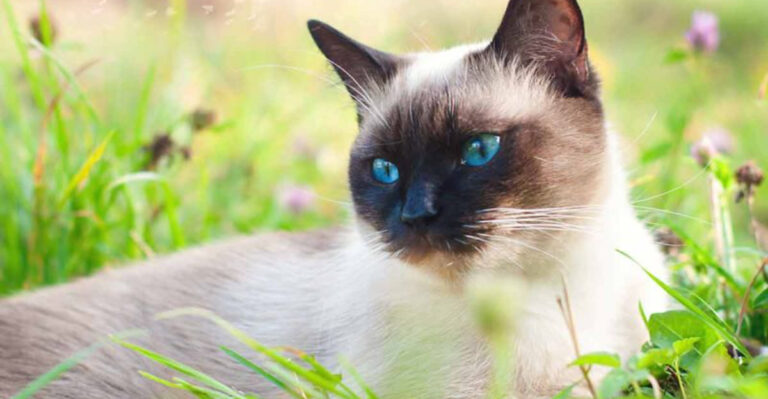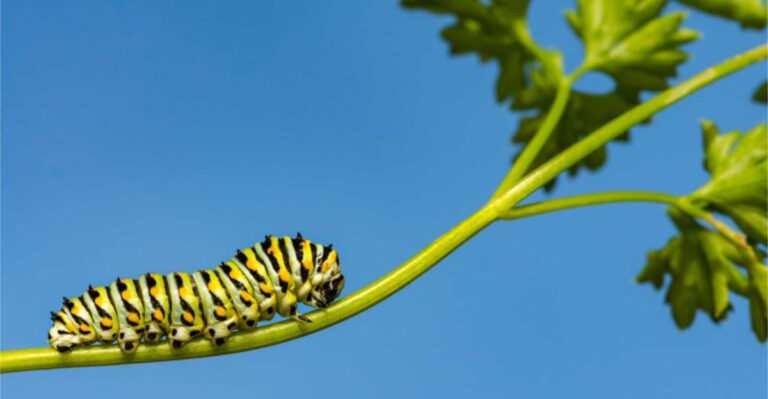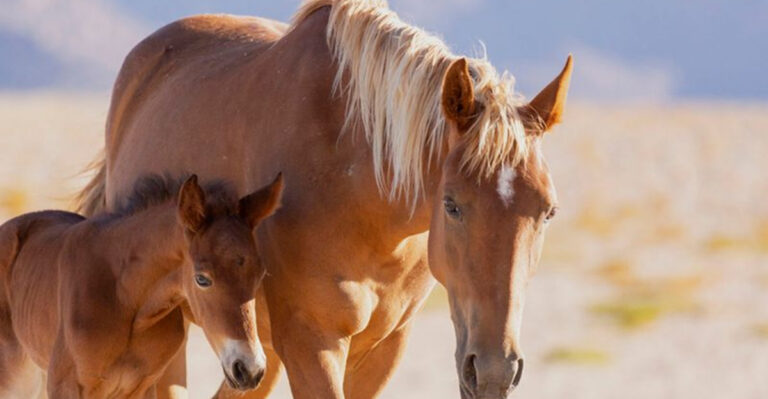17 Birds Every American Backyard Should Welcome

Birds bring life, color, and natural pest control to our outdoor spaces. Welcoming feathered visitors creates a mini ecosystem right outside your window, connecting you with nature without leaving home.
Attracting the right birds can transform your yard into a vibrant sanctuary while providing hours of entertainment and learning opportunities for the whole family.
1. Northern Cardinal
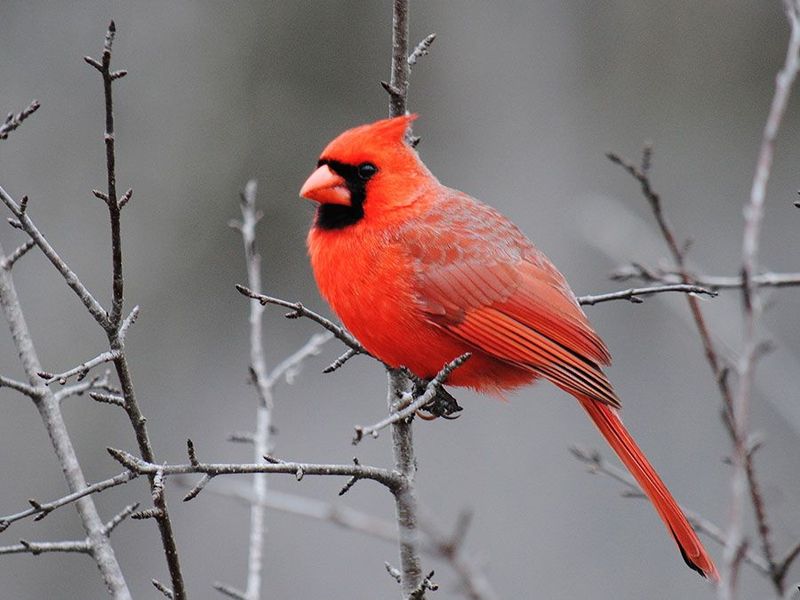
That flash of brilliant red against winter snow might just be the most recognizable bird in America. Male cardinals sport that famous crimson coat, while females rock a subtle tan with reddish accents.
These year-round residents don’t migrate, so they’ll stick around through all seasons. Cardinals love sunflower seeds and will readily visit feeders, bringing their cheerful whistling song as a bonus.
2. American Robin
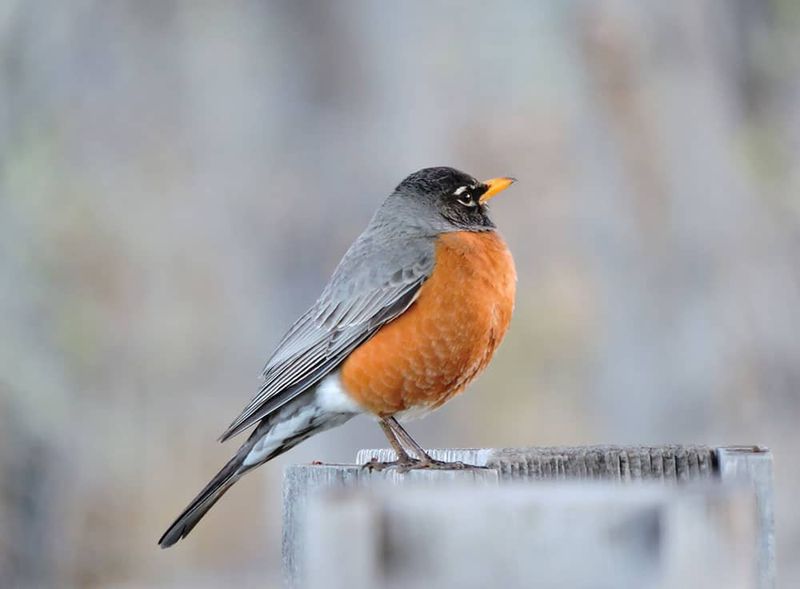
Spotting that orange-red breast bobbing across your lawn is often the first sign that spring has arrived. These familiar birds aren’t just pretty – they’re hardworking garden helpers that hunt for worms and insects in your soil. Robins don’t typically visit seed feeders but will flock to yards with healthy lawns, berry-producing shrubs, and birdbaths. Their morning songs create the perfect soundtrack for sunrise coffee on the porch.
3. Black-capped Chickadee

Small but mighty, these tiny acrobats zip through branches with endless energy. Their black cap and bib give them a dapper appearance, while their curious nature means they’re often the first to investigate new feeders.
Famous for their “chick-a-dee-dee-dee” call, these social birds will eat from your hand with enough patience. They’re winter warriors too, able to lower their body temperature at night to conserve energy during cold snaps.
4. Eastern Bluebird

Like a piece of sky come to life, male bluebirds dazzle with their vibrant blue backs and rusty-orange chests. Once declining due to habitat loss, these beauties have made a comeback thanks to backyard nest boxes.
Bluebirds hunt insects from perches, swooping down to catch beetles, caterpillars, and grasshoppers. They’ll thank you for open lawn areas where they can spot prey easily, and mealworms offered in platform feeders will keep them coming back.
5. Downy Woodpecker

Rat-a-tat-tat! That drumming sound might be America’s smallest woodpecker searching for insects in your trees. These pint-sized drummers sport black-and-white checkered patterns with males showing a small red patch on their heads.
Tree health inspectors by nature, downies help control insect populations that damage wood. They’ll visit suet feeders eagerly, especially in winter when natural food is scarce, and may even nest in dead tree limbs you leave standing.
6. American Goldfinch

Summer brings these flying lemons to gardens across America, with males sporting brilliant yellow feathers and black caps. Their rollercoaster flight pattern and cheerful “po-ta-to-chip” call add joy to any outdoor space.
Goldfinches are vegetarians, favoring seeds from plants like coneflowers, sunflowers, and thistle. Nyjer seed feeders will attract crowds of these colorful visitors, who undergo a fascinating transformation to dull olive-brown in winter before returning to yellow in spring.
7. Hummingbird

Jewels of the sky, these tiny marvels hover like helicopters while sipping nectar with specialized long bills. Their wings beat up to 80 times per second, creating that distinctive humming sound that gives them their name.
Different species visit different regions, but all love bright tubular flowers and sugar-water feeders. They’re surprisingly territorial despite their size, often chasing away rivals from their favorite feeding spots with squeaky chirps and impressive aerial displays.
8. Blue Jay
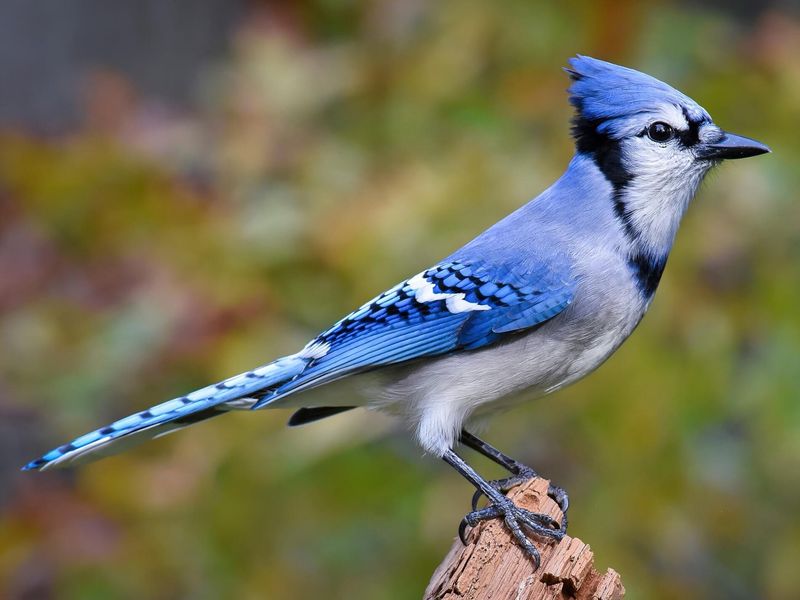
Neighborhood watch captains with attitude, these bold blue birds announce danger with raucous calls that alert all creatures nearby. Their striking blue, white, and black plumage makes them impossible to miss as they swoop through trees.
Smart and resourceful, jays cache seeds and nuts for later, helping spread oak trees by forgetting some of their buried acorns. They’re excellent mimics too, sometimes copying hawk calls to scare away competition from backyard feeders.
9. Dark-eyed Junco
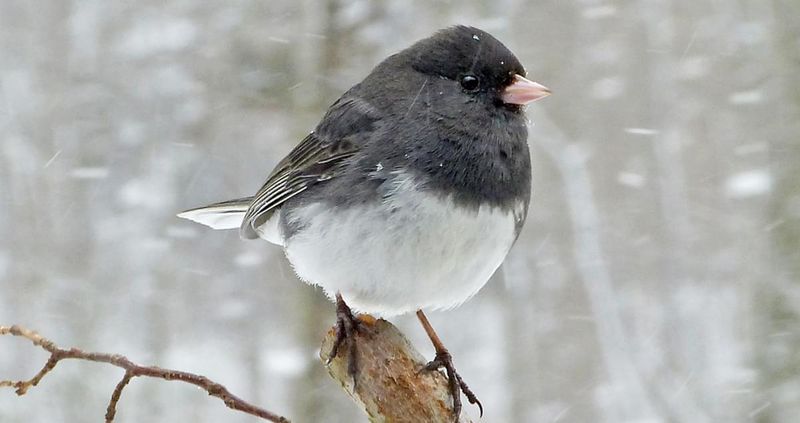
Nicknamed “snowbirds,” these charming winter visitors arrive in backyard flocks when temperatures drop. Their slate-gray tops and white bellies create a distinctive tuxedo look that stands out against snowy landscapes.
Ground feeders by nature, juncos hop beneath feeders gathering fallen seeds. Their soft trilling songs provide a gentle soundtrack to winter days. Many northern gardeners mark the changing seasons by juncos’ arrival in fall and departure in spring.
10. Baltimore Oriole
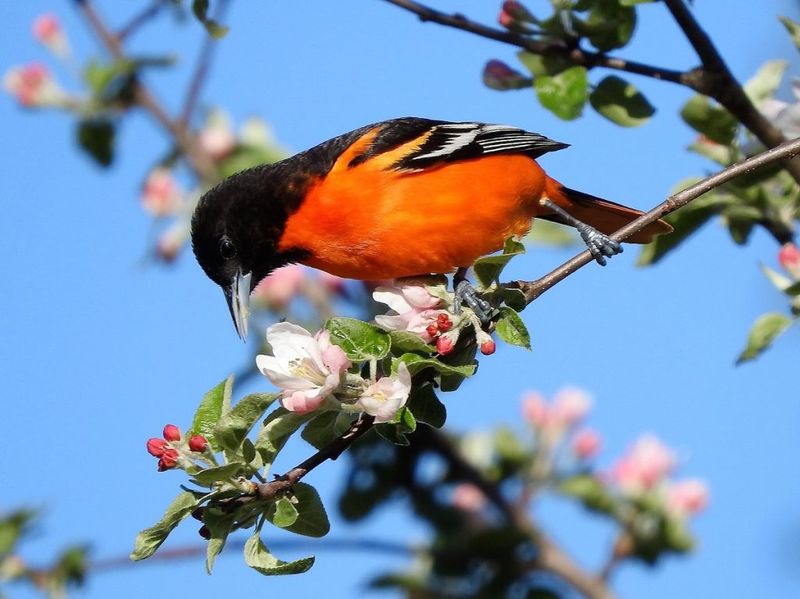
Flaming orange and black, male orioles bring tropical flair to northern yards each spring. These master weavers construct remarkable hanging nest pouches that dangle from high branches like natural ornaments.
Sweet-toothed by nature, orioles bypass seed feeders for grape jelly, orange halves, and nectar. Their flute-like songs rank among the most beautiful in North America. Plant native fruit trees and provide shallow water sources to make your yard an oriole paradise.
11. House Finch
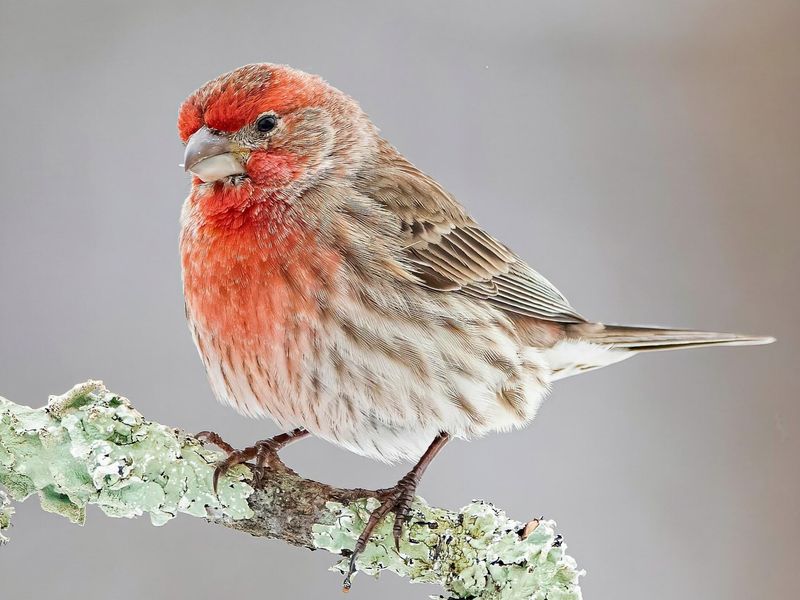
Raspberry-dipped males sport varying shades of red on their heads and chests, with more colorful plumage indicating well-fed, healthy birds. Their cheerful warbling songs create a pleasant backdrop to garden activities year-round.
Originally from western states, these adaptable birds now thrive nationwide near human habitation. They love black oil sunflower seeds and will raise multiple broods each season in shrubs, hanging plants, or nooks around buildings.
12. Mourning Dove
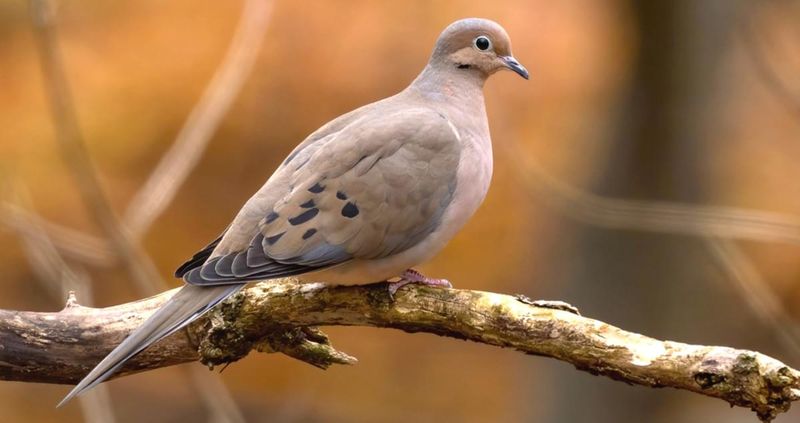
Gentle cooing that sounds like a lament gives these soft gray birds their melancholy name. Their plump bodies and small heads create an instantly recognizable silhouette on telephone wires and feeder perches. Peaceful by nature, doves prefer to feed on the ground beneath seed stations.
They mate for life and often raise several broods each season. Their wingbeats make a distinctive whistling sound during takeoff – nature’s way of warning others of potential danger.
13. Song Sparrow
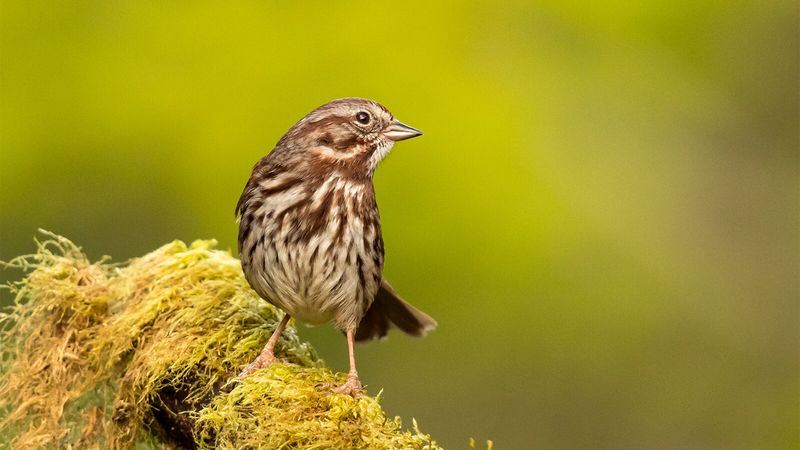
Master musicians of the bird world, these streaky brown birds deliver complex melodies that can include over 20 different notes. Their chocolate-drop breast spot helps identify them among similar-looking sparrow species.
Adaptable and widespread, song sparrows thrive in diverse habitats from marshes to suburban gardens. They forage for insects and seeds among low shrubs and ground cover. Providing brush piles and dense native plantings will make them feel right at home.
14. Cedar Waxwing

Masked bandits of the berry patch, these sleek birds sport a distinctive black face mask, crest, and yellow-tipped tail. Their name comes from the waxy red secretions on wing tips that look like drops of sealing wax. Traveling in social flocks, waxwings descend on fruit-bearing trees and can strip them clean in hours.
Their high-pitched whistles announce their arrival. Plant serviceberry, dogwood, or winterberry to attract these elegant visitors to your landscape.
15. Tufted Titmouse

Sporting a jaunty gray crest and big black eyes, these curious little birds bring personality to feeders with their acrobatic antics. Their name may sound funny, but it comes from Old English words for “small” and “mouse.”
Bold despite their size, titmice often grab one seed at a time, flying off to crack it open elsewhere. Their clear whistled “peter-peter-peter” calls ring through winter woods. They’re cavity nesters that will readily use nest boxes with the right dimensions.
16. Carolina Wren
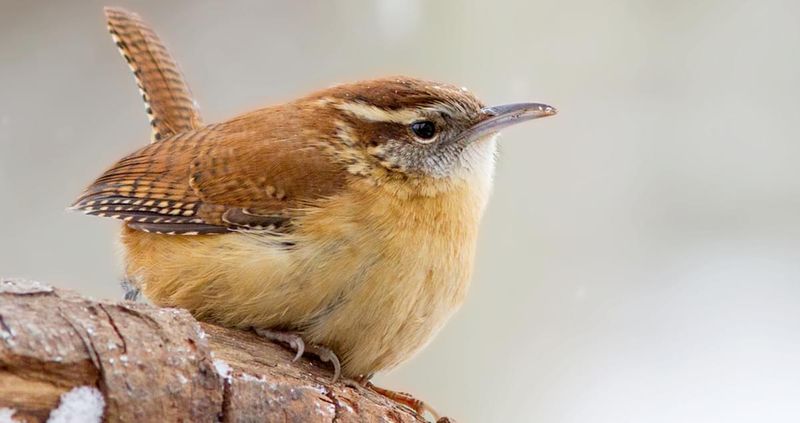
Cinnamon-colored bundles of energy, these vocal birds produce songs remarkably loud for their tiny size. Their upturned tails and bold white eyebrow stripe give them a perpetually inquisitive expression. Curious by nature, wrens explore every nook and cranny of yards searching for insects.
They’re not picky about nesting spots, using everything from flowerpots to old shoes if left available. Providing brush piles and keeping areas of your garden slightly untidy will make them happy.
17. Barn Swallow
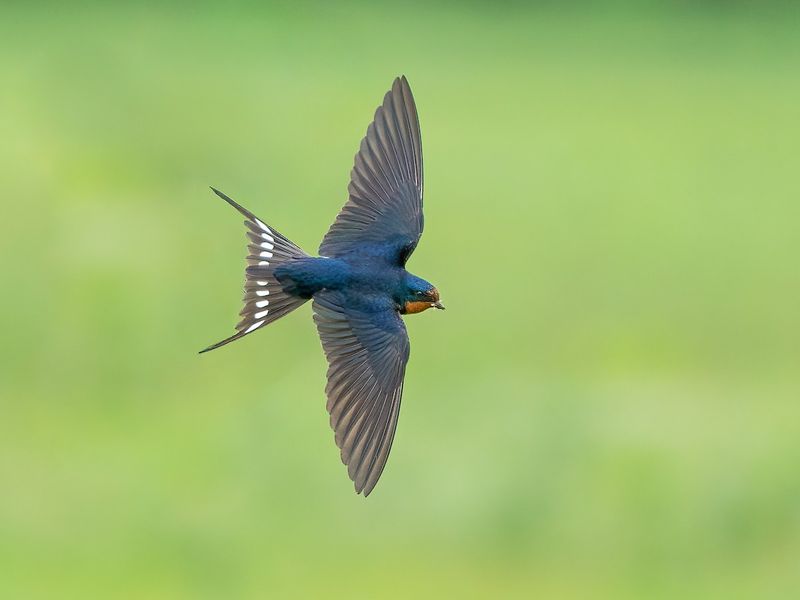
Flying acrobats with deep-forked tails, these aerial insect hunters perform swooping ballets above yards and fields. Their iridescent blue-black backs and rusty-orange underparts flash in the sunlight as they dart after mosquitoes and flies.
Master architects, barn swallows build cup-shaped mud nests under eaves and bridges. A single family can consume over 60 insects per hour! Providing a mud puddle and open areas for flying helps attract these beneficial mosquito-eaters.

